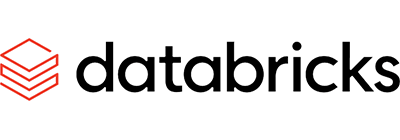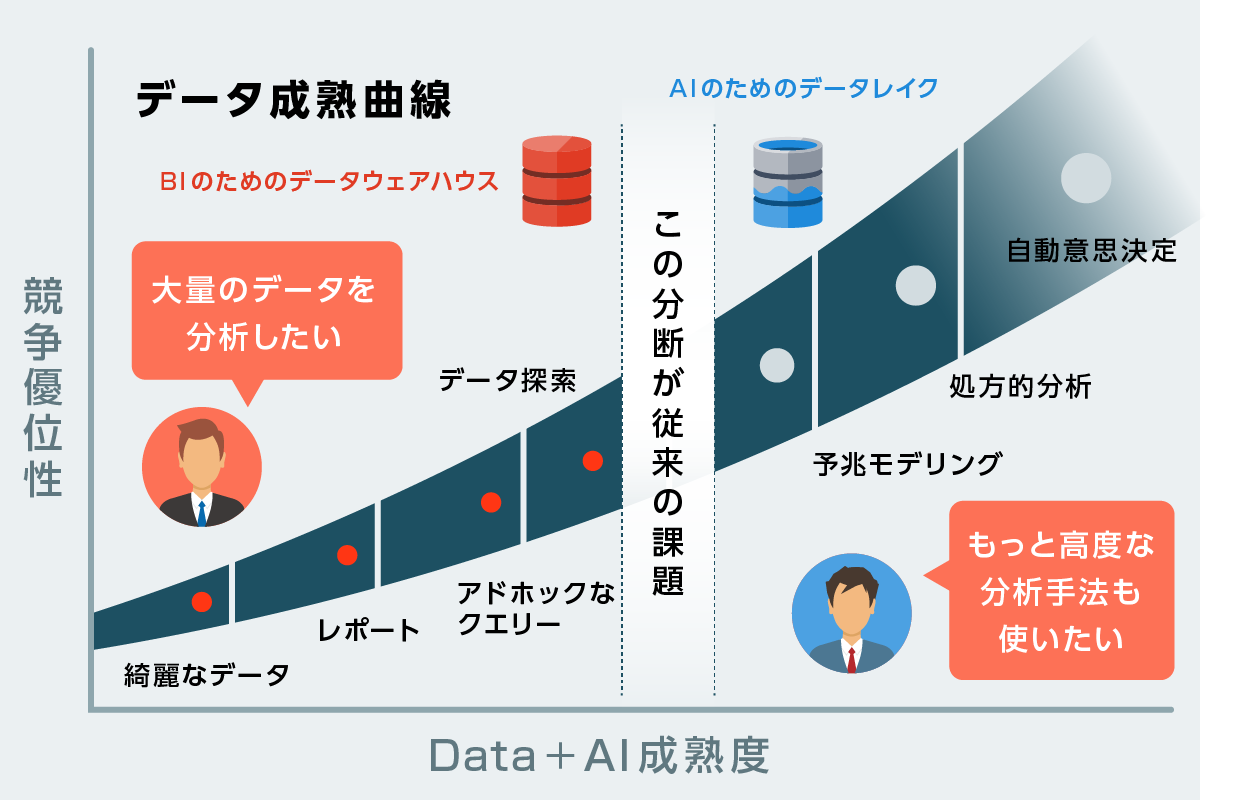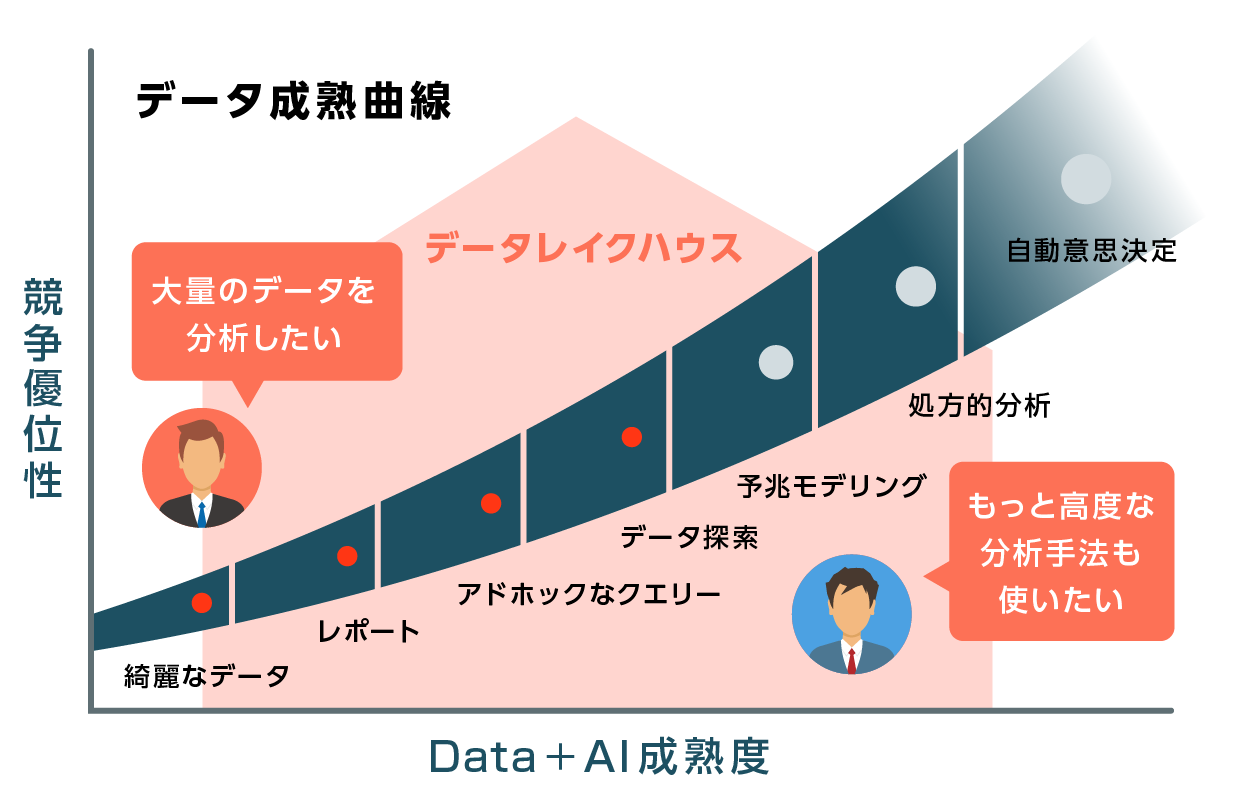
Databricks
databricks
Do you have a problem like this?
Data integration infrastructure has not been introduced...
- Data is distributed by department, and what data is located where?
I don't know - The operational load of multiple systems is high.
Unable to collaborate - Data formats vary by department, making cross-sectional utilization difficult.
Although we have already introduced a data integration platform...
- Due to the increase in the amount of data, the operation becomes slow and difficult to use.
- I want to use new data, but the data format and processing method are different.
cannot be integrated - It is difficult to expand resources and operate the system in preparation for the increase in data.
Next-generation data integration platform "Lakehouse"
“Lakehouse” provided by Databricks is a Data collection, accumulation, analysis, AI model development and operation can be implemented all at once, efficiently, and at low cost.
This is a next-generation data integration platform.
By centrally managing data in "Lake House," it is possible to utilize data across departments, collaborate among users with different skills, and unify governance.




Lake house features
①Data unification & catalog function
- Supports unstructured data and batch/stream data
- Clarify data authority, location, and owner by cataloging integrated data
② Realize “+AI” data utilization
- In addition to data collection and visualization (BI), we also provide an AI development environment.
- Future AI model development and operation can also be realized on a single platform
③High-speed processing & scalable
- Equipped with a high-speed processing engine that can be built on major public cloud services
- Realizes a highly functional and scalable data integration platform that allows resource expansion with the touch of a button.
Lake house introduction effect
Before
data complexity
- Data generated by disorganized systems that is difficult to interact with
- Data utilization is slow due to different data formats for each department.
Data owner absent
- Unmaintained data with no owner or administrator
- Data permissions and usage regulations are vague, so it takes time to obtain approval for use.
Lack of data utilization personnel
- A data linkage tool has been introduced, but its utilization is slow due to lack of human resources who can handle it.
After
Unification of data infrastructure
- Supports many linked services! A unified data utilization platform makes it easy to link with various services!
- Supports unstructured data and batch stream formats.
Data visualization
With catalog function
- Clarify data owners and control access to each data
- You can check the authority and location of data and immediately check whether it can be used or not.
Skill improvement
- Improve the skills of members in a rich workspace environment
Case study
Seminar
これから開催 開催終了 {{ item.title }}
{{ item.seminarClass }}
{{ cat }}
{{ item.makerName }}
開催終了
開催前
開催中
開催中
開催終了
{{ item.seminar_start_date__display_1 }} {{ item.seminar_place__display_1 }}
video on demand
company description
| company name | Databricks Inc. |
|---|---|
| Established | 2013 |
| location | San Francisco, California, United States |
| representative | Ali Ghodsi |
| website | https://www.databricks.com/jp/ |
Inquiry/Document request
In charge of Macnica Databricks Co., Ltd.
- TEL:045-476-2010
- E-mail:databricks-sales@macnica.co.jp
Mon-Fri 8:45-17:30



